What are the Printing Trends and Developments?
As time passed, printing technology evolved from wooden blocks to 3D printers. Printing trends have developed a lot with new technologies and techniques, let's take you through the journey of printing and how they have evolved to date. Printing has evolved in different stages mentioned below:
First stage: printing with wooden blocks
Second stage: movable type printing
Third stage: the press
Fourth stage: offset printing
Fifth stage: the linotype
Sixth stage: the laser printer
The last step: the 3D printer
First stage: Printing With Wooden Blocks
We are in the East, in China, in the sixth century AD, during the Tang dynasty. Among the many inventions of the great Empire, a system was created that allows printing trends through wooden matrices carved, inked, and imprinted on a sheet of paper. The scope of the discovery is so great that, in modern Chinese historiography, printing is considered one of the four great inventions of Ancient China. One of the first books printed with wooden blocks is a copy of the Diamond Sutra (868 AD), a roll of six sheets of paper over five meters long. A Korean pagoda was also recently discovered, which brought to light an even older Buddhist text, referable to 750-751 AD.
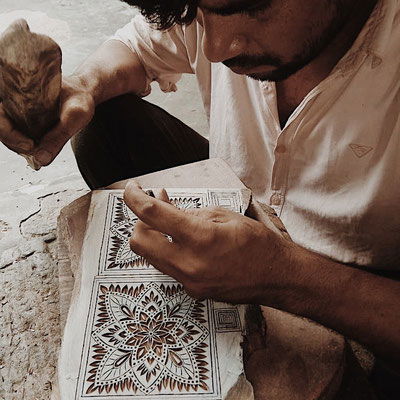
Second stage: Movable Type Printing
We now come to one of the most important stages in the history of printing: the introduction of movable type. Once again, the invention comes from China. In 1041 the typographer Bi Sheng invented portable clay types, which, however, have the defect of breaking easily. In 1298, inventor Wang Zhen began using much stronger wooden characters and also invented a complex system of rotating tables that improved print quality.
We are in the 15th century when Johannes Gutenberg introduced movable type in Europe. The object-fulcrum of his technique is the punch, a steel parallelepiped on whose head is engraved, in relief, and on the reverse, a typographic sign - which can be a number, a letter, or a punctuation mark. The punch creates the matrix where the characters are fused and subsequently arranged on a tray, inked, and imprinted on the paper.
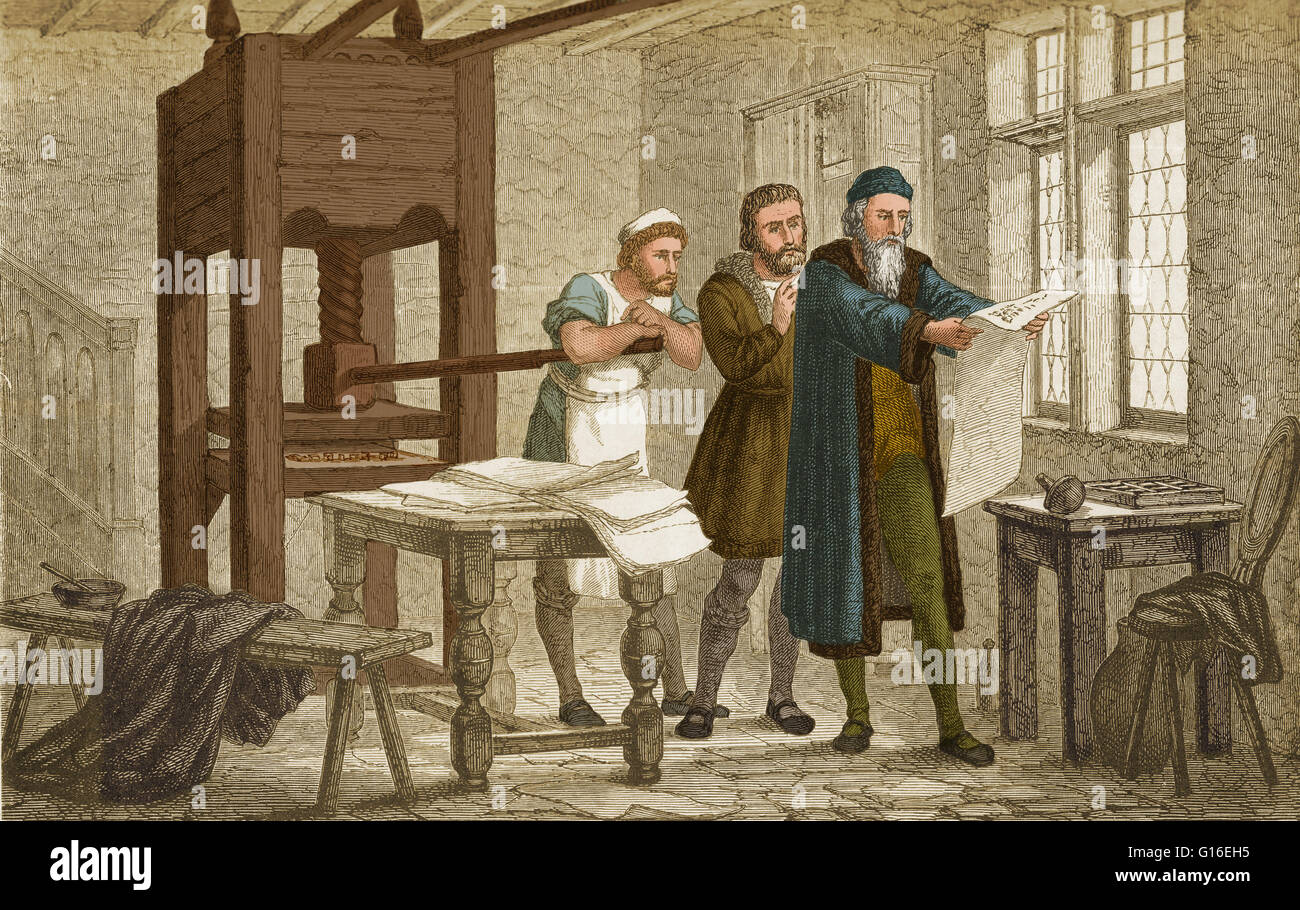
What are the three significant innovations introduced by Gutenberg? For the first time, it uses oil-based inks, which are more durable than previous water-based inks. Typefaces become more robust because they are made with lead, tin, and antimony alloy. Gutenberg invented the first press for printing, whose operation is inspired by that of the grape press.
After about a year of experimentation, on 23 February 1455, the "Gutenberg Bible" was printed, with a circulation of 180 copies.
Third stage: The Press
Let's jump back in time and arrive at 1843. We are in the United States, and Richard March Hoe invented the first press in history, perfected in 1846 and patented in 1847. At first, this printing system was fed by single sheets; in 1863, William Bullock introduced web feed: the images to be printed are curved around rotating cylinders. There is no longer a flat surface that exerts printing pressure: now, the paper passes through a cylinder that exerts a much more powerful force. Thanks to the process's mechanization and reel introduction, the rotary machine prints up to eight thousand copies per hour. We can define it as the first printing machine for large print runs. In 1846 the press appeared in the editorial office of the Philadelphia Public Ledger, the newspaper of the US city of the same name.
Fourth stage: Offset Printing
In 1875 Robert Barclay invented the offset printing technique, and, in 1904, Ira Washington Rubel adapted it to paper. It is an indirect printing method based on a straightforward chemical / physical phenomenon: the repulsion between water and greasy substances.
The printing process, however, is far from simple. The protagonist is the offset plate divided into two areas: the graphism one, lipophilic, therefore able to bind to the ink; that of counter graphics, hydrophilic, which cannot be covered with ink. The plate is wetted with a solution that attaches to the counter graphics and is subsequently inked. In this way, the ink adheres only to the drawings which are first transferred to a rubber cylinder and then printed on paper.
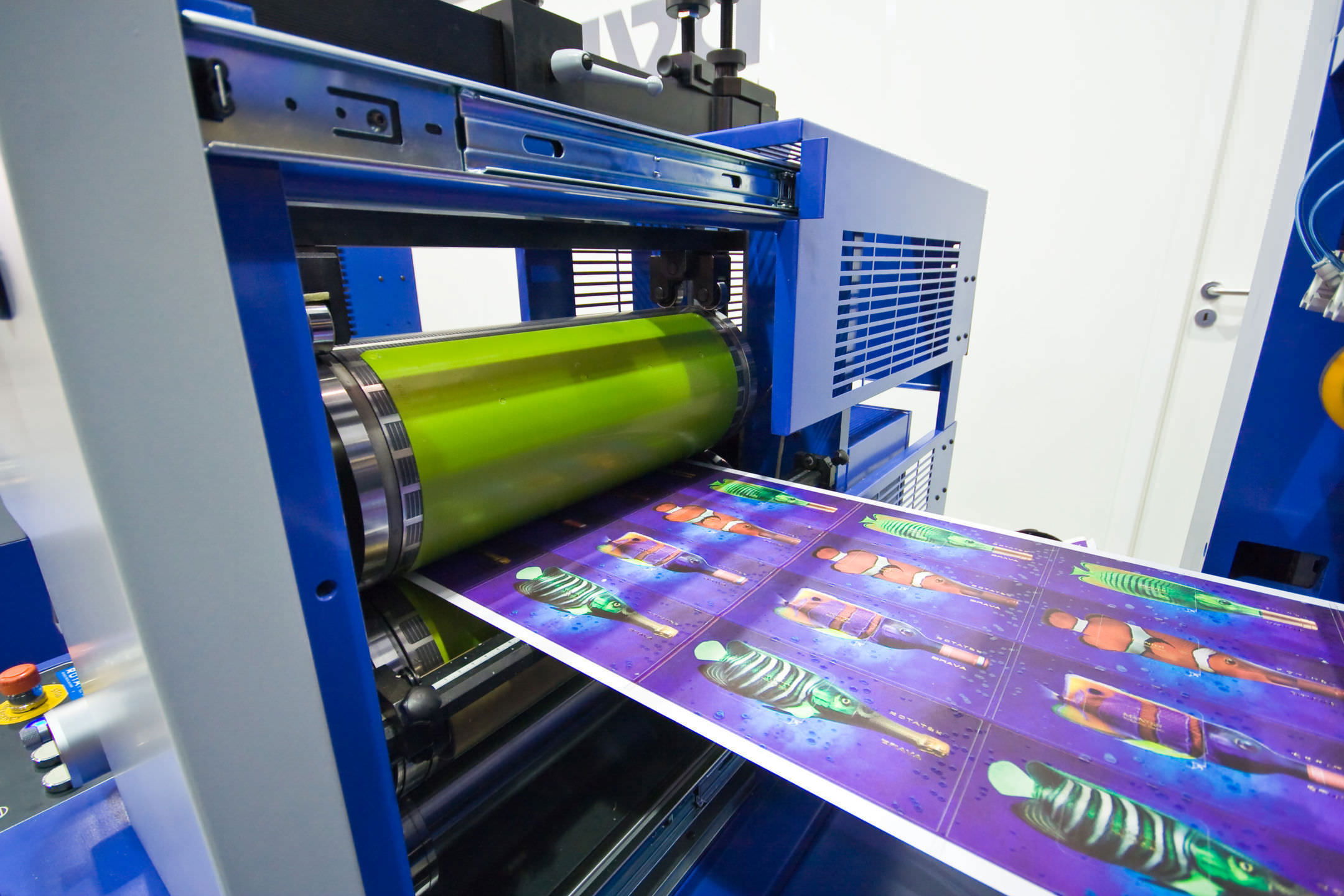
What are the benefits of offset printing?
The very high definition and resolution of the sign. The high quality of printing on any paper, even with a surface that is not perfectly smooth.
The disadvantages? Offset presses are bulky and require a lot of maintenance. This is why this printing system is only suitable for large productions.
Fifth stage: the linotype
In 1885 the German technician Ottmar Mergenthaler invented the linotype, the machine for typesetting. This system offers the advantage of automatically composing the character lines of the texts. The operation is very similar to that of the typewriter: the linotypist contains the words of the text by pressing the keys of a keyboard. Each key frees a matrix corresponding to a character, which aligns with others.
The line of matrices is filled with molten lead, inked, and used to imprint the characters on the sheets of paper. Although it may seem complex, linotype speeds up printing tremendously. From this moment on, typographers no longer have to compose by hand, character after character, the lines to be printed, everything is done mechanically.
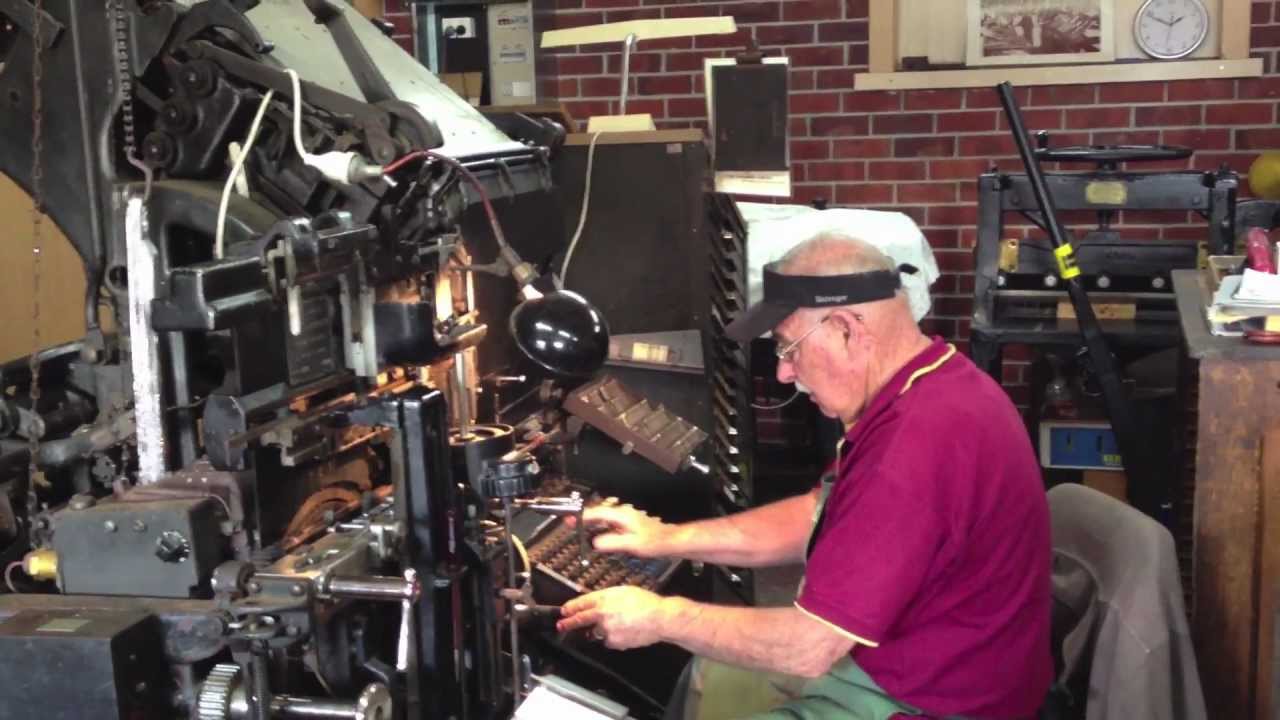
In 1886 the linotype made its first entry in the "New York Tribune," the newspaper founded in 1841 in New York. In Italy, however, it was used for the first time in 1897, in the headquarters of the “Tribuna” in Rome, one of the most important newspapers in the capital. Just think ... Thomas Edison called the linotype "the eighth wonder of the world." This speaks volumes about the importance of the machine in the history of printing.
Sixth stage: the laser printer
We come to 1971, Xerox Corporation develops laser technology. In a laser printer, the content to be printed is generated by electronic processes and is printed directly on the sheet of paper. More in detail: the image is transmitted by the laser to a photosensitive selenium cylinder (called "drum" or "magnetic roller"), and from there, through the toner, it is brought directly onto the paper.
With this system it is possible to print about twenty thousand lines per minute. Record times. But above all: from this moment on, anyone can independently print what they need. The first models of laser printers are not what we are used to today: they are bulky, complex, and costly.
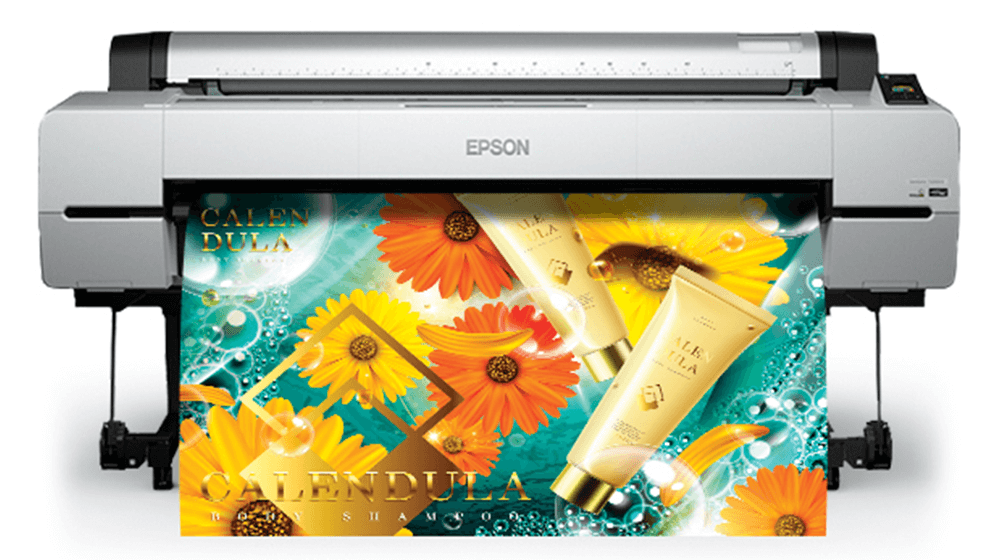
We had to wait until 1982 to see the first desktop laser printer produced by Canon. However, the machine's costs are still too high to consider it a product accessible to all. The great diffusion of laser printers to the public took place only at the beginning of the nineties, with inkjet, needle, and sublimation models. From this point on, printers are becoming cheaper, more compact and more and more efficient.
The last step: the 3D printer
We have arrived today. Let's end this journey through time in the company of the 3D printer. On closer inspection, this printing technique was born several years ago, more precisely in 1983, when Chuck Hull used UV rays for the first time to harden paints. The engineer baptizes his invention with the name of "stereolithography".
This method allows you to create solid objects by superimposing the layers of a photosensitive liquid polymer hit by ultraviolet light. What do we start from? From a 3D model produced by modeling software, such as Blender, AutoCAD, or OpenSCAD. Today there are several technologies for 3D printing.
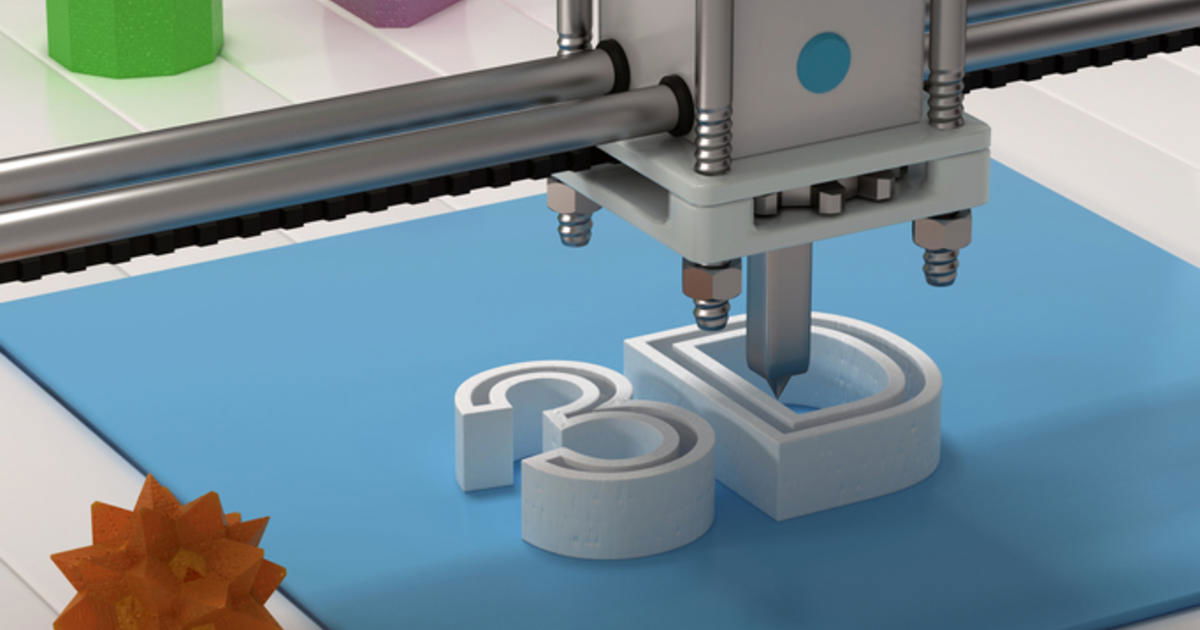
These differ, above all, in how the different layers are assembled: you can use materials that melt with heat, liquid materials to harden, or materials that are laminated and joined together. It took several years for 3D printing to become a mass phenomenon. The reason? The prices of this technology, initially, were very high. Today 3D printing is used in many areas - from architecture to archeology, passing through art and the healthcare sector - and we are sure that new ones will continually be added.
Conclusion: All these printing techniques are better to print any customised product for your business. You can use any one of the above-mentioned techniques to print flyers, use in booklet printing, brochure printing, Notepad printing and many more.
